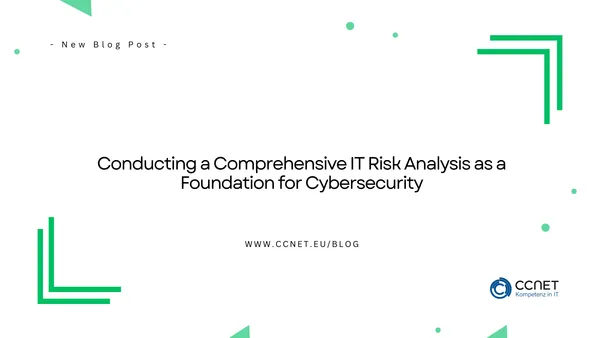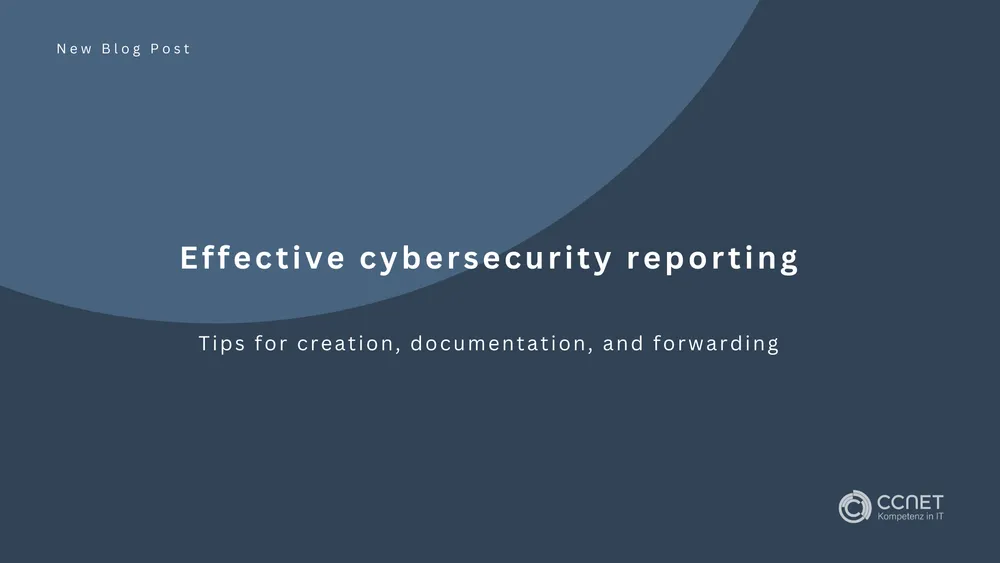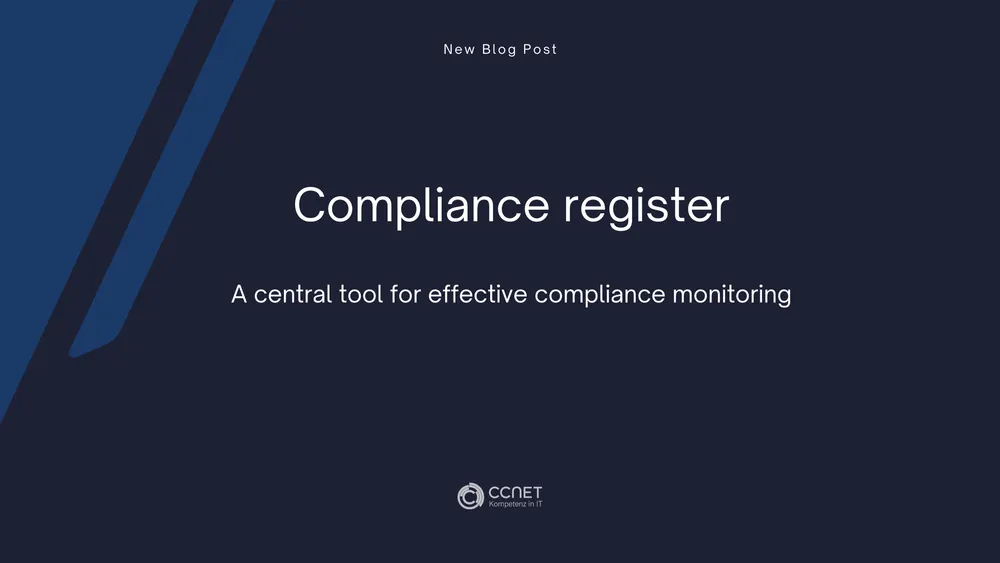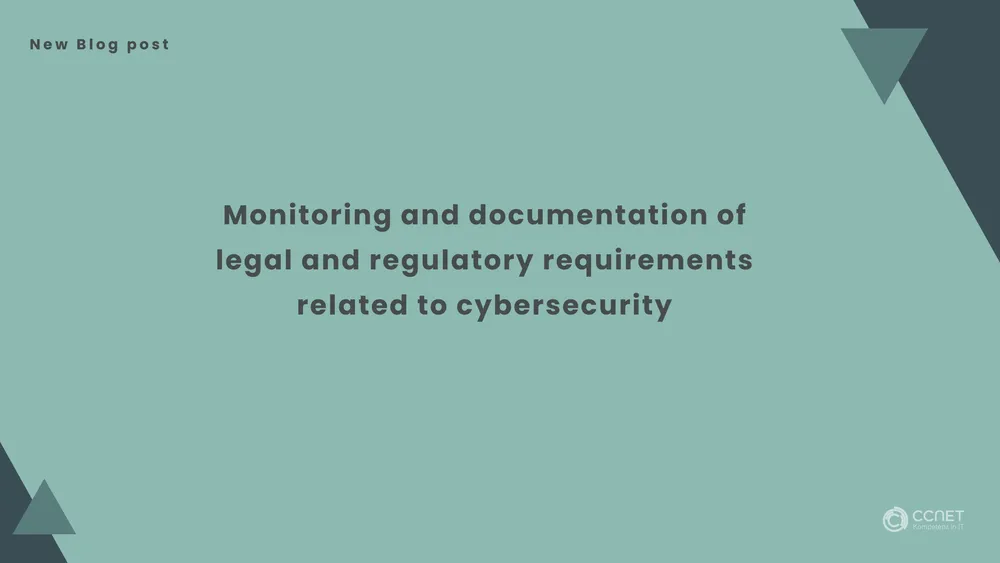
CCNet
Dec 27, 2024 • 3 min read

Conducting a Comprehensive IT Risk Analysis as a Foundation for Cybersecurity
Conducting a comprehensive IT risk analysis is key to identifying and mitigating cybersecurity risks. The NIS2 Directive emphasizes the importance of companies proactively identifying, assessing, and prioritizing risks to ensure the integrity and security of their IT infrastructure. This risk analysis forms the basis for developing effective security measures and ensures that the company appropriately responds to current threats.
Further information can be found here: IT-Consultation
What You Need: A Detailed, Structured Risk Management Process
An IT risk analysis includes identifying all potential threats, assessing their impact and likelihood, and prioritizing the actions to be taken. A well-defined process allows for targeted risk response and efficient resource allocation. The process is designed to be conducted regularly and flexible enough to respond to changes in the threat landscape.
How to Implement It: Steps to Conduct a Comprehensive IT Risk Analysis
-
Process Goal: Targeted Identification and Mitigation of Risks
- Objective: A comprehensive risk analysis aims to identify, assess, and take measures to mitigate all potential IT security threats, with a special focus on critical systems and data.
- Implementation: The results of the risk analysis serve as a decision-making foundation for management to allocate resources for security measures.
-
Process Scope: Covering All Critical Areas
- Scope: The analysis covers all IT systems, networks, and databases within the company and considers both internal and external threats. The focus is on evaluating and prioritizing risks to develop targeted measures.
-
Frequency of Execution: Regularity and Flexibility
- Regular Review: The risk analysis is conducted at least once a year. Flexibility is essential to perform unscheduled analyses when significant changes in IT infrastructure occur or new threats are identified.
-
Process Steps: From Identification to Implementation
-
4.1. Initiation of the Risk Analysis
- Responsible: IT Security Officer
- Activity: At the start of the fiscal year, the IT Security Officer initiates the analysis. A team of IT specialists and external security consultants is assembled to ensure thorough evaluation expertise.
-
4.2. Identification of Threats
- Responsible: IT Team and External Consultants
- Activity: Potential threats to the IT infrastructure are identified, including cyberattacks, internal vulnerabilities, human error, physical risks, and regulatory risks.
-
4.3. Risk Assessment
- Responsible: IT Team
- Activity: Each risk is assessed in terms of its likelihood and potential impact. Both qualitative and quantitative methods are used to achieve a detailed risk assessment.
-
4.4. Risk Prioritization
- Responsible: IT Security Officer
- Activity: Based on the assessment, risks are prioritized into categories (high, medium, low) to efficiently allocate resources and address the most urgent risks first.
-
4.5. Documentation of Results
- Responsible: IT Security Officer
- Activity: All risks, assessments, and prioritizations are documented in a report. This report serves as the basis for decision-making and includes recommendations for risk mitigation measures.
-
4.6. Presentation and Approval
- Responsible: IT Security Officer
- Activity: The results are presented to management. After discussion and approval, resources are allocated to implement the proposed measures.
-
4.7. Implementation of Risk Mitigation Measures
- Responsible: IT Team
- Activity: Approved measures are implemented, including technical improvements (e.g., firewall updates), organizational changes (e.g., adjustments to access policies), or employee training measures.
-
4.8. Monitoring and Follow-Up
- Responsible: IT Security Officer
- Activity: The effectiveness of the implemented measures is continuously monitored. Adjustments are made as needed, and results are documented in a continuous monitoring report.
-
-
Roles and Responsibilities: Clear Assignment and Control
- IT Security Officer: Responsible for initiating, documenting, and presenting the risk analysis and overseeing the implementation of the measures.
- IT Team: Assists with the identification, assessment, and prioritization of risks and implements risk mitigation measures.
- External Security Consultants: Provide expertise in risk analysis and help identify threats.
- Management: Approves the action plan and allocates resources for implementation.
-
Reporting: Detailed Documentation and Presentation
- Activity: A detailed report on the risk analysis is created annually. This report includes an overview of identified risks, assessments, prioritizations, and proposed measures and is presented to management.
-
Continuous Improvement: Adaptability and Efficiency
- Activity: The process is regularly reviewed and improved. New threats and technological developments are incorporated into the analysis, and the evaluation criteria are adjusted to ensure that the method meets current requirements.
Benefits of a Comprehensive IT Risk Analysis
- Targeted Risk Management: Identifying and prioritizing risks allows for efficient allocation of resources for effective risk mitigation measures.
- Continuous Improvement: Regular review and adjustment of the risk analysis ensure that the company is prepared for current threats.
- Efficient Decision-Making: The creation of a detailed report enables management to make informed decisions and allocate necessary resources quickly.
Conclusion: Effective Risk Mitigation and Cybersecurity Through Continuous Risk Analysis
A comprehensive and well-structured IT risk analysis is an integral part of any effective cybersecurity strategy. By identifying, assessing, and prioritizing risks, companies can take targeted actions to minimize threats and meet the requirements of the NIS2 Directive. Use this process to continuously improve the security of your IT infrastructure and efficiently manage potential risks.


